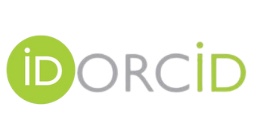Síndrome Treacher-Collins. Presentación de caso.
Keywords:
disostosis mandibulofacial, anomalías craneofacial, cigoma.Abstract
El Síndrome Treacher-Collins es un trastorno craneofacial congénito que se produce por la mutación del gen TCOF1, localizado en el cromosoma 5q31-33. Se caracteriza por malformaciones mandibulofaciales, donde se destacan la micrognatia severa, macrostomia y microtia de grado variable. La forma de herencia predominante es la autosómico dominante, aunque se han reportado casos autosómicos recesivos y mutaciones de novo. Se presenta este caso teniendo en cuenta lo poco frecuente de este síndrome malformativo, con el objetivo de destacar la importancia del método clínico como forma de diagnóstico eficaz, al presentarse un recién nacido con malformaciones severas es necesario diagnosticar oportunamente la afección que presenta para ejecutar intervención multidisciplinaria que requiera y brindar un adecuado asesoramiento genético a la familia.Downloads
References
Dinlen N, Zenciroğlu A, Dilli D, Aydin B, Beken S, Okumuş N. Treacher Collins syndrome with multiple congenital heart defects after paroxetine exposure: case report. Genet Couns [Internet]. 2014 [citado 19 Dic 2014];25(1). Disponible en: http://www.ncbi.nlm.nih.gov/pubmed/24783649
Ulusal S, Gürkan H, Vatansever U, Kürkçü K, Tozkir H, Acunaş B. A case of treacher collins syndrome. Balkan J Med Genet [Internet]. 2013 Dic [citado 19 Dic 2014]16(2). Disponible en: http://www.ncbi.nlm.nih.gov/pubmed/24778568.
Asten P, Akre H, Persson C. Associations between speech features and phenotypic severity in Treacher Collins syndrome. BMC Med Genet [Internet]. 2014 [citado 19 Dic 2014];15. Disponible en: http://www.ncbi.nlm.nih.gov/pubmed/24775909.
Kadakia S, Helman SN, Badhey AK, Saman M, Ducic Y. Treacher Collins Syndrome: the genetics of a craniofacial disease. Int J Pediatr Otorhinolaryngol [Internet]. 2014 Jun [citado 19 Dic 2014];78(6). Disponible en: http://www.ncbi.nlm.nih.gov/pubmed/24690222.
Schaefer E, Collet C, Genevieve D, Vincent M, Lohmann DR, Sanchez E, et al. Autosomal recessive POLR1D mutation with decrease of TCOF1 mRNA is responsible for Treacher Collins syndrome. Genet Med [Internet]. 2014 Sep [citado 19 Dic 2014];16(9). Disponible en: http://www.ncbi.nlm.nih.gov/pubmed/24603435.
Konstantinidou AE, Tasoulas J, Kallipolitis G, Gasparatos S, Velissariou V, Paraskevakou H. Mandibulofacial dysostosis (Treacher-Collins syndrome) in the fetus: novel association with Pectus carinatum in a molecularly confirmed case and review of the fetal phenotype. Birth Defects Res A Clin Mol Teratol [Internet]. 2013 Dic [citado 19 Dic 2014];97(12). Disponible en: http://www.ncbi.nlm.nih.gov/pubmed/24288143.
Gripp KW, Curry C, Olney AH, Sandoval C, Fisher J, Chong JX, et al. Diamond-Blackfan anemia with mandibulofacial dystostosis is heterogeneous, including the novel DBA genes TSR2 and RPS28. Am J Med Genet A [Internet]. 2014 Sep [citado 19 Dic 2014];164A(9). Disponible en: http://www.ncbi.nlm.nih.gov/pubmed/24942156.
Giampietro PF, Armstrong L, Stoddard A, Blank RD, Livingston J, et al. Whole exome sequencing identifies a POLRID mutation segregating in a father and two daughters with findings of Klippel-Feil and Treacher Collins syndromes. Am J Med Genet A [Internet]. 2014 Oct [citado 19 Dic 2014];167A(1). Disponible en: http://www.ncbi.nlm.nih.gov/pubmed/25348728.
Caluseriu O, Lowry BR, McLeod R, Lamont R, Parboosingh JS, Bernier FP, et al.The hutterite variant of Treacher Collins syndrome: a 28-year-old story solved. Am J Med Genet A [Internet]. 2013 Nov [citado 19 Dic 2014];161A(11). Disponible en: http://www.ncbi.nlm.nih.gov/pubmed/24108658.
Green B, Nikkhah D, Cobb AR, Dunaway DJ. Craniofacial disorders that have phenotypic overlap with Treacher Collins syndrome. J Plast Reconstr Aesthet Surg [Internet]. 2013 Ago [citado 19 Dic 2014]66(8). Disponible en: http://www.ncbi.nlm.nih.gov/pubmed/23664577.
Published
How to Cite
Issue
Section
License
Medimay protects copyright from the very first moment the submission is made, but upon publication it assumes a Creative Commons 4.0 (cc-by-nc) license, which allows the use of the work to share (copy and redistribute the material in any medium or format) and adapt (remix, transform and build from the material) as long as exclusive mention is made of the publication in the journal as a primary source, prohibiting its commercialization. The author always retains his/her right.














 This site is licensed under a
This site is licensed under a